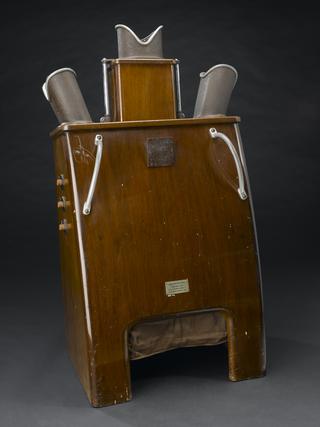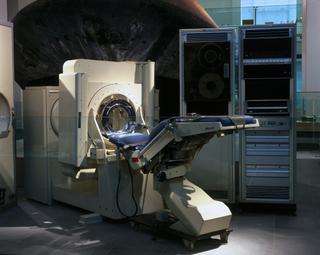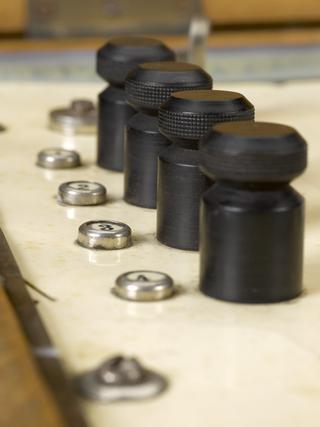

Potash regulated X-ray tube, c.1897
An X-ray tube consists of a cathode (negative electrode) and an anode (positive electrode). Electrodes are emitted from the cathode. They flow to the anode plate generating X-rays when in a vacuum. The completeness of the vacuum inside early X-ray tubes affected its output. This could vary during use. Incorporating potash (potassium carbonate) in a side tube attempted to control this. When the vacuum became too high, heating the potash released a little gas, which lowered it. X-rays were discovered by Wilhelm Conrad Röntgen in November 1895.
Details
- Category:
- Radiomedicine
- Collection:
- Sir Henry Wellcome's Museum Collection
- Object Number:
- A600219
- Materials:
- tube, glass, cathode, aluminium, anticathode, aluminium, anode, aluminium and regulator, potash
- Measurements:
-
overall: 50 mm x 300 mm x 78 mm, 0.47 kg
- type:
- x-ray tube
- credit:
- Flower, A.H.




